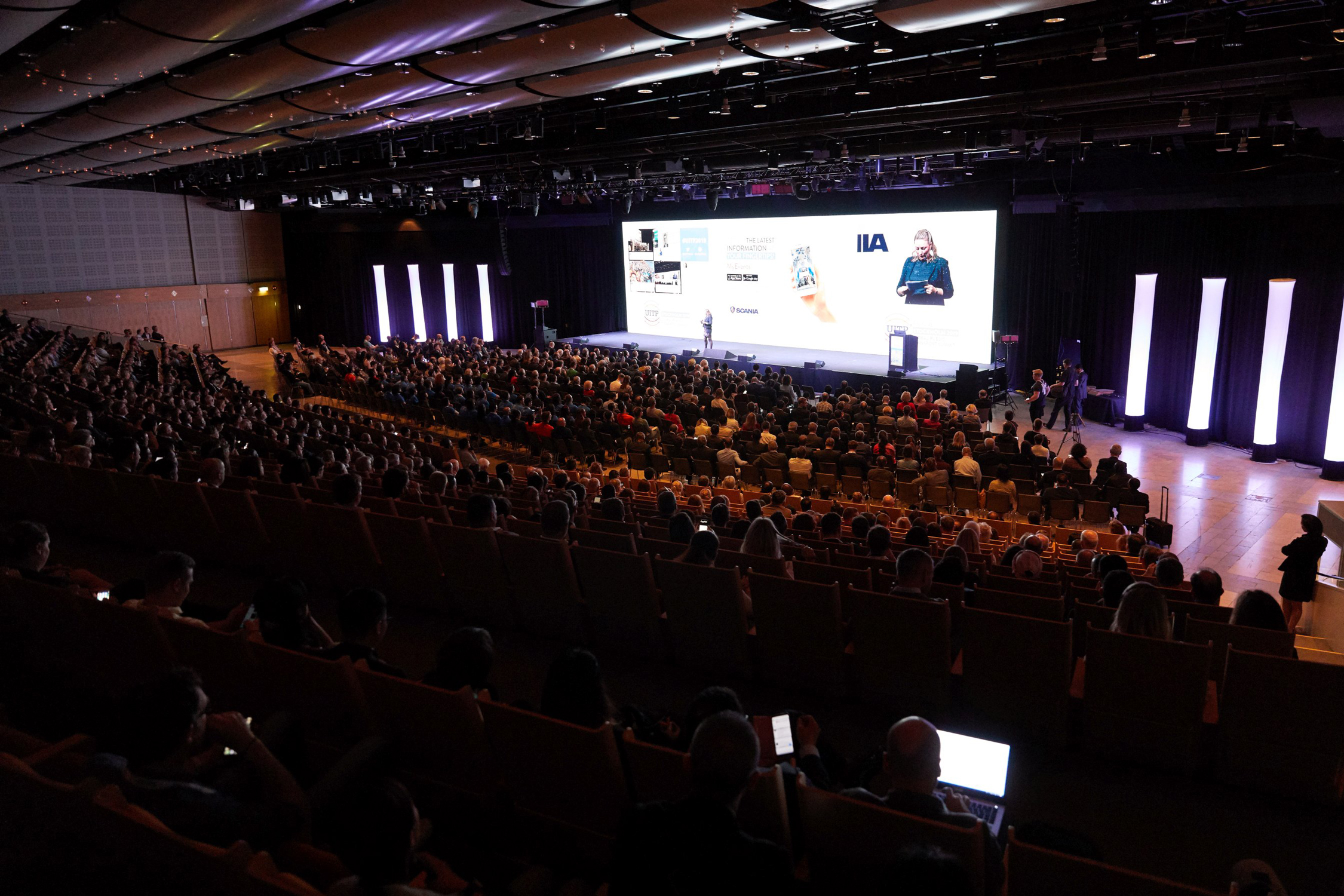Summit Dispatches, Day 3: Cutting-edge Exhibitors, Public-Private Partnerships, and an adventure on Montréal’s Metro
On the morning of the 375th anniversary of the city of Montréal, the sun is out again and I walk past the twin gothic towers of the beautiful Notre-Dame Basilica with a smile on my face. As I approach the Palais for the final day of the Summit, I notice a rack of BIXI bicycles – Montréal’s public bike-share system – and a number of Communauto carshare vehicles. Montréal seems to be taking the theme of the Summit to heart, and is certainly leading the mobility transition!
9:00–10:30, Innovation Tour of the Exhibition
With 330 exhibitors and over 20,000m² of exhibition space, I felt a little overwhelmed at the prospect of navigating the hall alone. So I signed up for a UITP-led Innovation Guided Tour, promising a tailored programme covering a wide range of public transport technology, including exclusive World Premieres.
There’s a veritable buzz in the air as we enter the exhibition hall, with all kinds of public transport products and services on display. Highlights included the World Premiere of AIT’s ‘EXPERIENCE’, a virtual reality-based system that allows transport operators to evaluate wayfinding systems and architectural designs before they are built. Dr Stefan Seer talked us through the technology, and demonstrated how the VR headset can be used to analyse transport projects, such as a new metro station.
At the Bytemark stand, we witnessed the future of ticketing, with Bluetooth-based hands-free smartphone validation. In short, the product makes it possible to open a transport gate – of a metro, bus, or train – without needing to scan a pass or insert a ticket. Commuters simply approach the gate with the Bytemark app, and, if they have a ticket loaded, the gate will open. This is especially attractive for high-traffic areas, offering a frictionless ticketing experience. Bytemark ticketing is already available throughout the UK and North America, and I expect to see this technology everywhere soon.
I especially enjoyed Remix’s presentation of their innovative public transport planning application, which uses open-source transport data to help urban planners and public administrators make informed decisions. The application is truly impressive, allowing planners to design new networks or update existing ones. Working with over 200 transport agencies across the world, Remix is changing the face of urban planning.
Walking through the two exhibition halls offered a glimpse of the future of mobility, and I for one felt excited at the prospect of smarter, greener and more usable transport solutions.
11:00–12:30, “Public and private players partnering for integrated mobility systems”
This was one of the more popular sessions of the Summit, with delegates packed into the room, eager to learn about the power of integrated mobility from pioneers of the sector. Marco Viviani, Vice President of Strategic Development at Communauto, presented the history of the oldest car-sharing organisation in North America, and one of the oldest in the world.
“The most important thing for new players to do is to integrate with other modes of public transport”, said Mr Viviani. “The base of our development is partnership with transit companies – with rail, bus, taxi, and bike-sharing. Each mode has its own strength to provide an alternative to car ownership. We are much stronger together than alone.”
In fact, just yesterday French transport operator RATP acquired stake in Communauto, to develop a common strategy to a common goal – this truly demonstrates the potential for public-private partnerships!
More breaking news: this morning, Elizabeth Borne, CEO of RATP, was appointed Transport Minister in French President Emmanuel Macron’s cabinet. She gave an inspiring speech at the Opening Ceremony, and her commitment to integrated mobility will hopefully extend into her new role.
Sebastian Schlebusch, Director of International Business Development at Nextbike, discussed the importance of strategic collaboration: “We are not cannibalising public transport service but providing a viable complementary service. Bike-sharing has a fundamental role to play in public transport of the future.”
He outlined Nextbike’s approach to integration: the STIM strategy includes integration of strategy, tariff, infrastructure and marketing. This approach involves MaaS applications, bike hubs at all stations, and collaboration on communication. Nextbike is the world’s most extensive bike-share provider – with 40,000 bikes in 24 countries – so this approach seems to be working.
Next to the podium was Ana-Maria Tonita, Head of Business Development at Germany’s Door2Door, an urban mobility start-up offering an integrated transport platform. “Public transport needs to adapt and evolve”, said Ms Tonita. “We believe the way forward is implementing on-demand ride-sharing systems that are integrated with other public transport modes. To achieve our vision of a world without private cars, we need to work together.”
This idea of working together, sharing best practices, and collaborating on strategy has been a constant theme of the Summit, and I look forward to this model of integrated mobility spreading across the world.
12:30–14:30, Exploring Montréal’s Metro
With my stomach full from the excellent Summit buffet, I wanted to take advantage of the sun and the 29°C day (yes, you read that correctly, it was hot out!), so I hopped on the metro for a little ride. Being at a public transport event, I figured that I should really get to know the local network. I was lucky enough to ride on one of the new AZUR trains, which have been in operation since early last year.
The interior was very modern, with digital screens displaying route and weather information. There was also no separation between the cars, so I could move from one end to the other, which seems to allow for more passenger space (apparently the new trains can fit 80 more passengers than the previous model). Overall, I found the ride to be smooth, comfortable and genuinely pleasant.
As I was trying to make a connection and find my way around the station, I thought of upWay, joint winner of the Y4PT Global Transport Hackathon, and their metro navigation app. It features a 3D map, with augmented reality technology, and their hardware allows for offline tracking. I hope their project will be picked up by an investor and made available soon!
Another product that could have helped me was Syntony’s SubWave+, a solution that emits a GPS signal underground, which makes metro stations fully navigable on transport apps. A station fitted out with SubWave+ lets passengers use location services on their smartphones while riding the metro.
As I’m changing trains, I recall the words of Maksim Liksutov, Deputy Mayor of Moscow, who stressed how important it was to have full Wi-Fi access on all transport modes; in October of last year, Moscow implemented blanket coverage on its metro and surface transit.
This train of thought, that took me through all of the innovative sessions and exhibitions I’ve attended over past three days, epitomises what is so special about this Summit – it offers the chance to learn from others, collaborate on forward-thinking solutions, and experience the future of public transport technology.
There’s only one thing left to say: See you in Stockholm!



